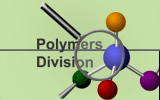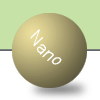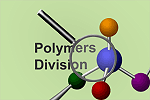Dimensional Metrology with Small Angle X-ray Scattering
|
| |
Introduction
|
 |
|
|
 Sidewall angle is one of five major inspection
metrology challenges in the “International Technology Roadmap
for Semiconductors” (ITRS).
Sidewall angle is one of five major inspection
metrology challenges in the “International Technology Roadmap
for Semiconductors” (ITRS).
Need for fast, nondestructive measurement method.
Cross-sectional SEM and AFM cannot meet projected need.
|
| |
Experimental Approach
|

|
| |
 Measurement of a test sample at multiple angles of incidence
Measurement of a test sample at multiple angles of incidence
Construct Fourier space map of the pattern cross section.
Left: Theoretical result of this protocol for a model
trapezoid The intensity streaks provide the sidewall angle.
The intensity map also provides a check for a particular model
cross-sectional profile; a limitation in current metrologies
such as light scatterometry.
|
| |
Results
|
 |
|
|
 Left: The intensity of one Bragg diffraction
peak recorded as a function of sample rotation angle. This data
is compared with the theoretical model.
The distance between the maxima determines the average sidewall
angle of the features.
For a trapezoidal cross section, the sidewall angle precision
is approximately +/- 0.2 degrees.
Left: The intensity of one Bragg diffraction
peak recorded as a function of sample rotation angle. This data
is compared with the theoretical model.
The distance between the maxima determines the average sidewall
angle of the features.
For a trapezoidal cross section, the sidewall angle precision
is approximately +/- 0.2 degrees.
|
| |
Additional Benefits
|

|
| Method applicable to dense, high aspect ratio patterns, even
sub-10 nm.
Methodology applicable to arbitrary cross section, requiring
only the solution of a new model for analysis.
|
|
|
Publication
|
 |
“Sidewall and Pattern Cross Section Metrology using Small
Angle X-ray Scattering”
Journal of Applied Physics to appear in 2004.
|
| |
NIST Contributors
|
 |
Wen-li Wu*
Ronald L. Jones*
Tengjiao Hu
Christopher Soles
Bryan Vogt
Eric Lin
|
| |
Collaborators:
|
 |
Diego Casa (Argonne)
Qinghuang Lin (IBM) |
| |
| |
| |
| |
| |
| |
| |
| |












